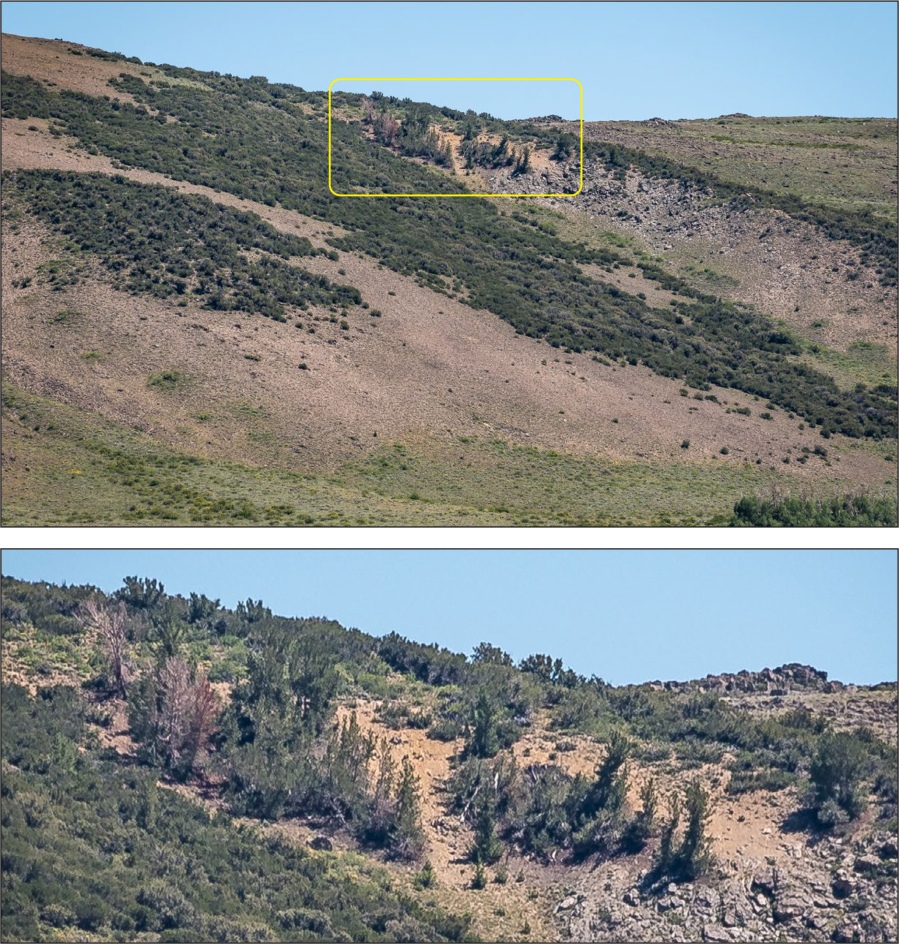
Update, March 13, 2024: I’ve corrected a bunch of typos and other minor errors in the January 2024 edition, and have replaced it with a new, updated and corrected March 2024 edition, at the same link on the Downloads page. There you will also find a new, short (9 pages), simple Checklist (without lengthy keys and annotations) as a quick reference for printing or to load onto your smartphone.
Plants of the Bodie Hills, 2024 Edition, is now available on the Downloads page (a free PDF). As in previous years, the new edition contains additions, corrections, nomenclatural updates, and refinements to the keys. A key to families of Dicots (Magnoliopsida) in the area has at long last been added. Several place names, road names, and boundaries have been added to the map on the back cover (last page of the PDF).
The total number of “minimum rank” vascular plant taxa documented to occur in the Bodie Hills now stands at 727, in 80 families. Another 96 taxa, including 2 additional dicot families, are still considered to be potentially present, but not yet confirmed by collections or observations within the Bodie Hills.

New additions to the 2024 edition (found during 2023) are:
- Lupinus uncialis (Lilliput lupine) at the Bodie Hills Preserve and at Travertine Hot Springs,
- Micromonolepis pusilla (Dwarf monolepis) at Mormon Meadow,
- Phacelia curvipes (Washoe phacelia) in the southwestern Bodie Hills,
- Platanthera tescamnis (Great Basin bog orchid) at a remote spring in the northeastern Bodie Hills in Mineral County, and
- Saponaria officinalis (Common soapwort) at Conway Summit.
Plants seen in 2023 that had been expected in the Bodie Hills or not seen here for decades were:
- Antirrhinum (Sairocarpus) kingii (King’s snapdragon) at Travertine Hot Springs,
- Collomia grandiflora (Large-flowered collomia) near Mormon Meadow,
- Eriogonum hookeri (Hooker’s buckwheat) at Travertine Hot Springs,
- Erythranthe rubella (Little redstem monkeyflower) at “Sage Flat,” (near the Little Bodie Mine historical marker),
- Malacothrix glabrata (Desert dandelion) in Red Creek Wash (from a 1983 collection),
- Penstemon deustus (Hot rock penstemon) north of Bridgeport Reservoir Dam, and
- Silene nuda (Sticky catchfly) along Cow Camp Road.
Nearly all of these were found, not by me, but by others posting their observations to iNaturalist (thanks to all who do this!). All observations within the Bodie Hills on iNaturalist can be seen HERE.

As before, you have two options for how to use this document: 1) load the PDF onto a mobile device or 2) print the PDF yourself.
- Using a mobile device: I’ve found the PDF to be quite readable on my iPhone (in the Books app), although it helps that I’m near-sighted. It’s even easier to read on an iPad, other tablet, or laptop.
- Printing the PDF: You can print the PDF yourself or at a local print shop. I highly recommend printing the 128 pages 2-sided to conserve paper and to reduce bulk and weight in the field. A comb or spiral binding, binder clip, or other binding will hold it together.
Your additions, corrections, comments, or questions are always welcome.

Copyright © Tim Messick 2024. All rights reserved.



















